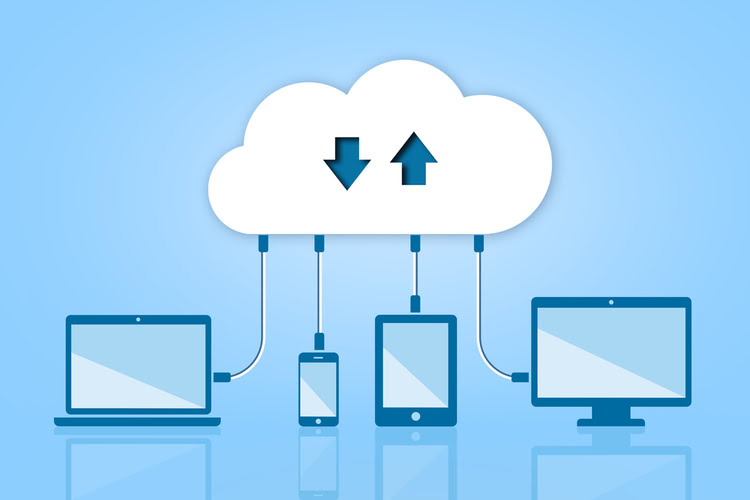Content
These integrations create the ability to automate processes across the enterprise, helping organizations adapt to evolving needs with more flexibility. Organizations are expanding, deploying, and interconnecting applications and networks across multiple clouds and both virtual and physical data centers. Our hybrid security solutions protect and connect across all points of deployment while simplifying cloud operations.

On the other hand, the on-prem security technology wins in compliance with government regulations. Examples of on-prem security systems that meet these regulations are SIS, Tevora, Rimstorm, and Ntiva. One of the key differences between on-prem vs. cloud security is the ability to sync data quickly and automatically. With new standards of privacy compliance now in place around the world, infringement could cost businesses thousands per year.
What Are the 4 Areas of Cloud Security?
The encryption process transforms data into unreadable formats before transferring and storing it in the cloud. Without an encryption key, content on the cloud becomes indecipherable to attackers and, therefore, ineffective. Also, they are ready to deploy software platforms, not service suites or system integrator offerings, to help you get started at low effort and timelines. Utilizing segmentation across every environment—containers, the public cloud, on prem—with a common security footprint makes everything easier. Eliminate blind spots with complete visibility into network traffic, workloads and containers. Automatedthreat intelligenceprovides authoritative context that is trustworthy, actionable and readily available.
Companies use cloud to rapidly roll out innovative digital products and services, modernize IT environments, and support hybrid working. Consequently, cloud adoption has already reached remarkable levels and continues to grow. According to the Flexera 2021 State of the Cloud Report , 80% of organizations have a private cloud, 97% use a public cloud, and 92% leverage multiple clouds.
Improved DDoS protection
Built In’s expert contributor network publishes thoughtful, solutions-oriented stories written by innovative tech professionals. It is the tech industry’s definitive destination for sharing compelling, first-person accounts of problem-solving on the road to innovation. Chiradeep is a content marketing professional, a startup incubator, and a tech journalism specialist. He has over 11 years of experience in mainline advertising, marketing communications, corporate communications, and content marketing. He has worked with a number of global majors and Indian MNCs, and currently manages his content marketing startup based out of Kolkata, India. He writes extensively on areas such as IT, BFSI, healthcare, manufacturing, hospitality, and financial analysis & stock markets.
- DLP services are built to detect the presence of sensitive data—credit card data, electronic Protected Health Information , social security numbers, etc.—and prevent them from falling into the wrong hands.
- Customers also have the option to manage their own encryption keys for complete control.
- Companies often choose the onsite option when they want full control over every aspect of the system.
- Cloud security services and solutions can help you protect your data even as you introduce new cloud solutions to your environment.
- Striking the right balance requires an understanding of how modern-day enterprises can benefit from the use of interconnected cloud technologies while deploying the best cloud security practices.
- All locations are configured and managed from a cloud-accessed dashboard, available 24/7 from anywhere in the world.
CWPP typically collects information directly from operating systems rather than integrating with cloud provider APIs. Security information and event management provides a comprehensive security orchestration solution that automates threat monitoring, detection, and response in cloud-based environments. While enterprises may be able to successfully manage and restrict access points across on-premises systems, administering these same levels of restrictions can be challenging in cloud environments. This can be dangerous for organizations that don’t deploy bring-your-own device policies and allow unfiltered access to cloud services from any device or geolocation. However, successful cloud adoption is dependent on putting in place adequate countermeasures to defend against modern-day cyberattacks.
Top Cloud Security Posture Management (CSPM) Tools
Firewalls are as important in the cloud as they are on-premises, but they involve a few different requirements. A cloud firewall must be deployed in such a way that it does not disrupt essential connections within a virtual private cloud or within the broader cloud network. Firewalls and other technologies can be used to inspect and filter network traffic to and from cloud resources (ingress/egress traffic) — whether web access in front of an application or general traffic regulation. The way to approach cloud security is different for every organization and can be dependent on several variables. However, the National Institute of Standards and Technology has made a list of best practices that can be followed to establish a secure and sustainable cloud computing framework. RH-ISAC members can post RFIs in the CISO and Analyst communities to get recommendations from peers on the right tools for your tech stack.
With the diversity of these tools, your provider can help you operate securely at any point in your business’s cloud computing journey. Many organizations prefer the on-premise options from legacy access control providers. Companies often choose the onsite option when they want full control over every aspect of the system.
Trend Micro: Best for Hybrid Cloud Security
Data retention and business continuity planning involve technical disaster recovery measures in case of data loss. Central to any DR and BC plan security companies list are methods for data redundancy such as backups. Additionally, having technical systems for ensuring uninterrupted operations can help.
Conversely, sandboxing isolates risky files from critical ones to prevent potential damage. Disaster recovery is also a key component of security to recover lost or stolen data. Intrusion-detection solutions monitor inbound and outbound traffic for suspicious activities and detect https://globalcloudteam.com/ potential threats. Usually, detection is done through pattern recognition mechanisms that identify specific signatures and behaviors. However, we’re now seeing more solutions applying this kind of protection to the host layer (i.e., to the virtual machines themselves).
Private Cloud via Public Provider
The most important factor in determining which technology to choose is how the provider monitors, tests, and protects against the ever-evolving threats. For customers in small businesses, medium-sized organizations, and corporate settings, hybrid cloud security services might be a very wise decision. However, it is these businesses that potentially benefit from the cloud’s combination of accessibility and size with on-site control of certain data. Qualys is a cloud security and compliance software platform that helps enterprises identify and protect their digital assets. It provides a unified platform for security, compliance and IT operations teams to detect and respond to threats, reduce their attack surface, and ensure regulatory compliance. While enterprises can insist on a private cloud — the internet equivalent of owning your own office building or campus — individuals and smaller businesses must manage with public cloud services.
